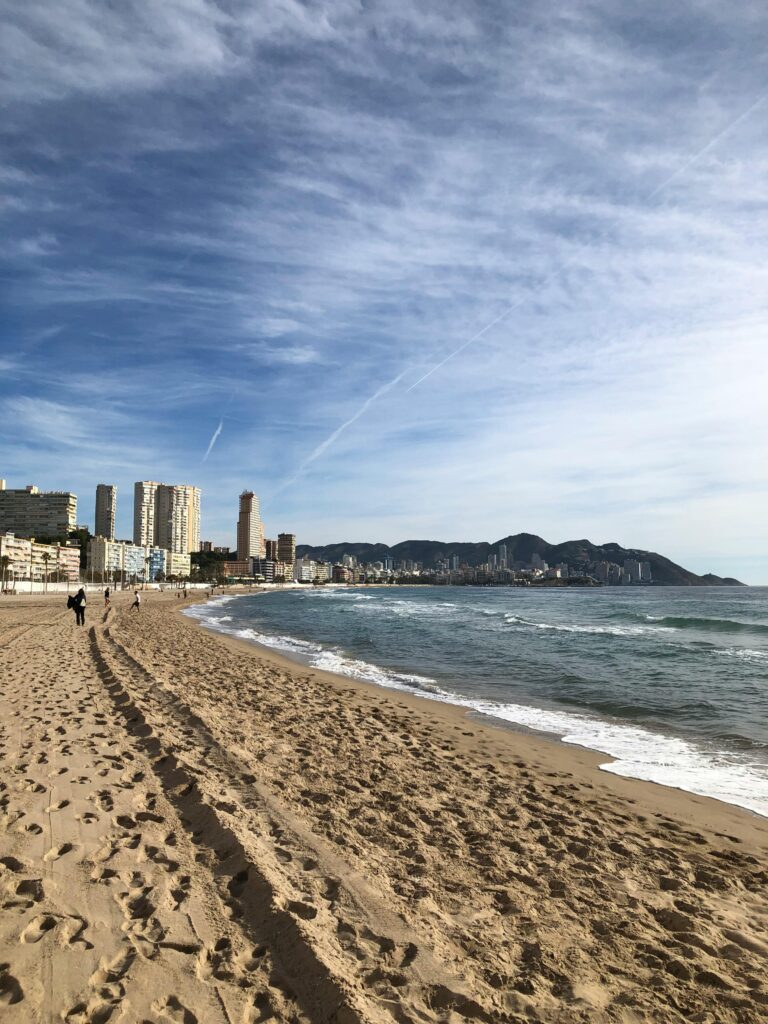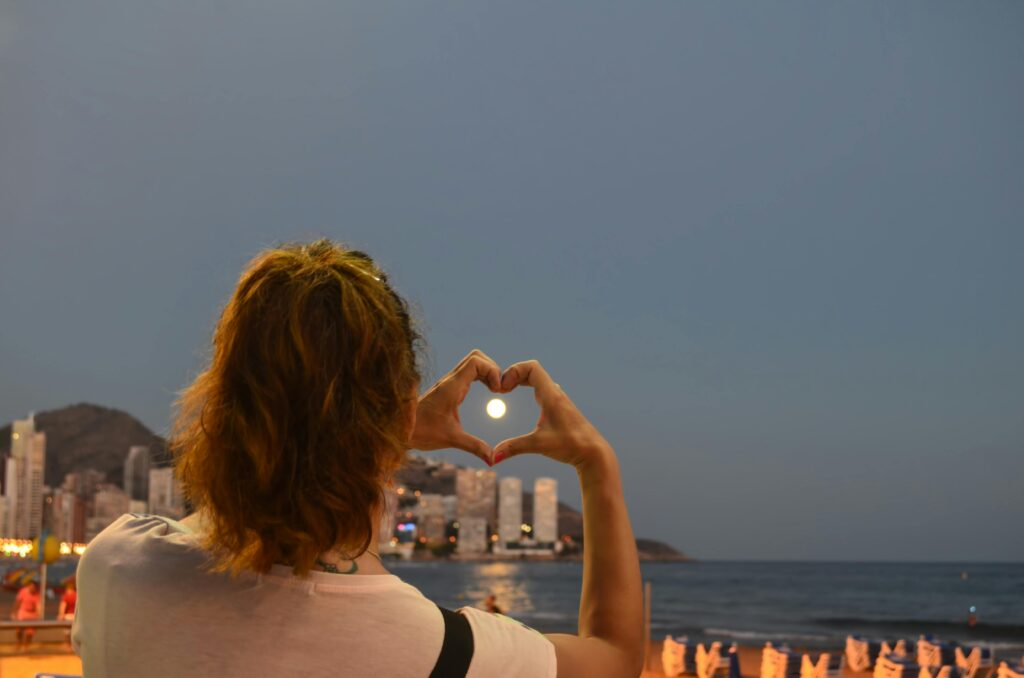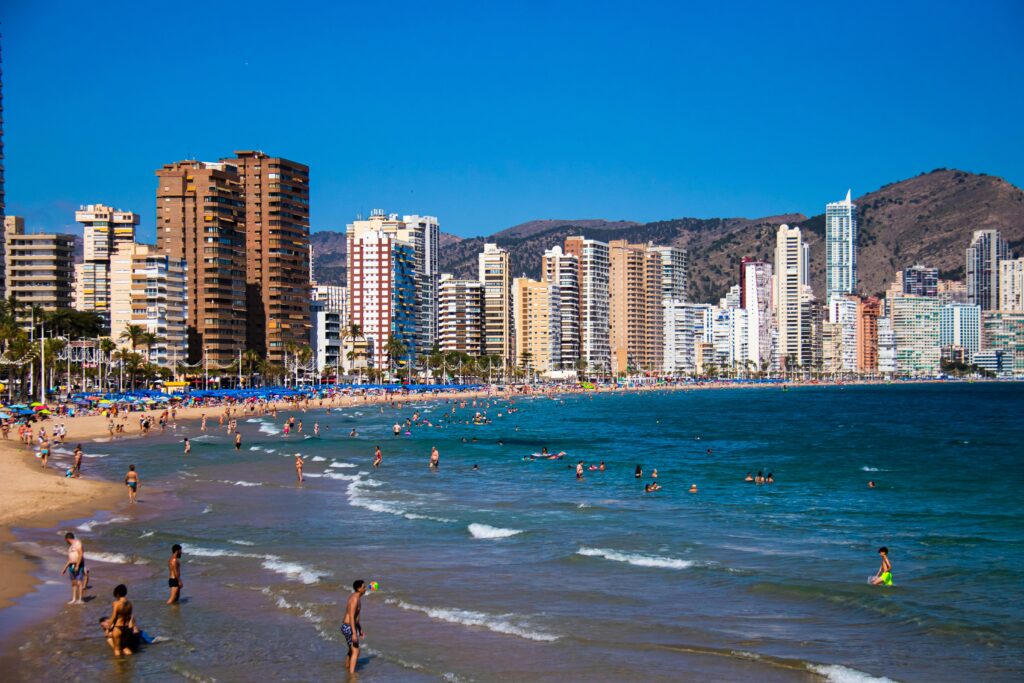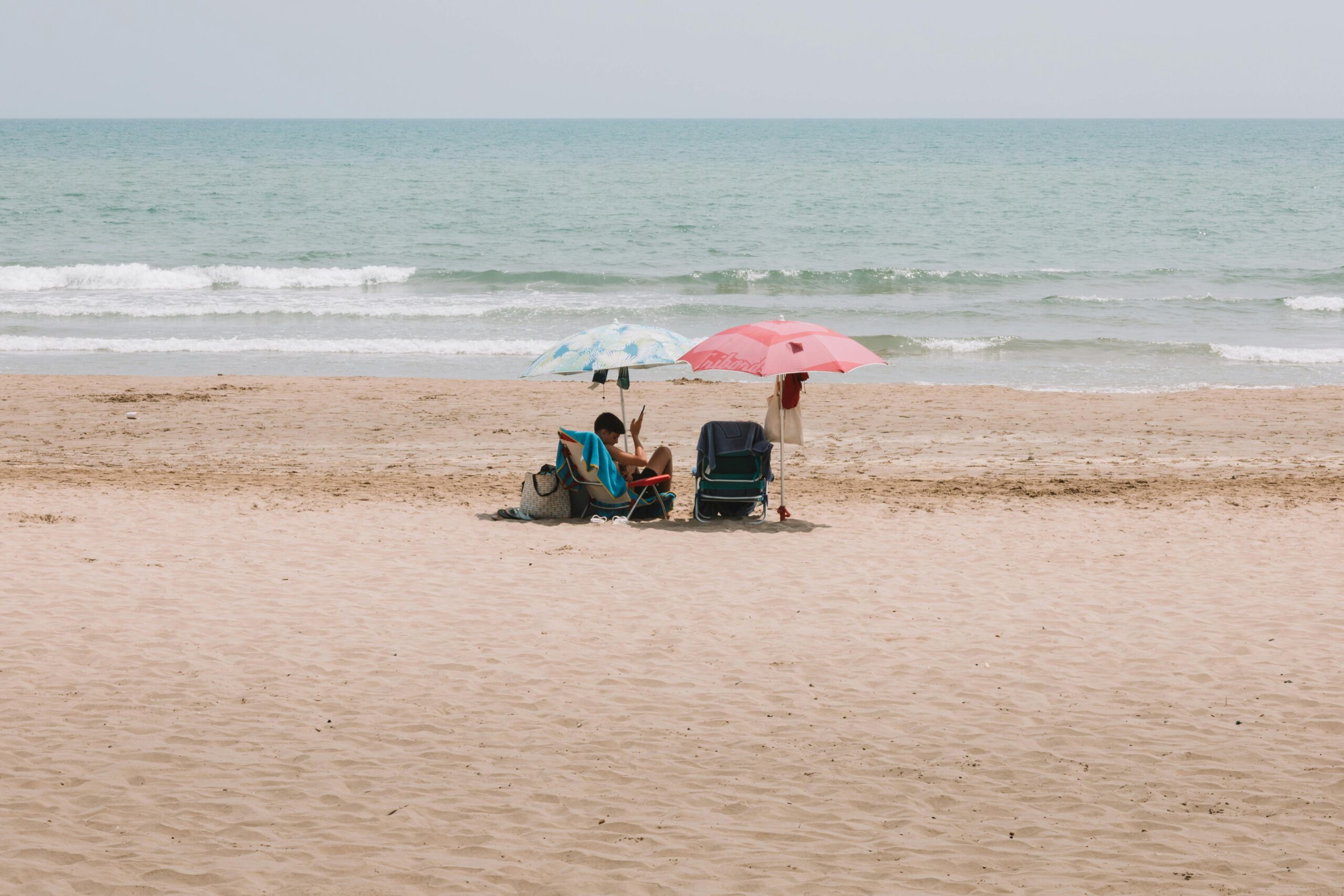Nestled on Spain’s Costa Blanca, Benidorm was once a humble fishing town where nets and line boats washed ashore on quiet coves. Today, it draws nearly 3 million visitors a year to its twin swathes of golden sand, dramatic high‑rise skyline, and hedonistic nightlife. Recent photographic works—such as Rob Ball’s new monograph—capture the paradoxes of “Beniyork,” spotlighting both its pastel‑hued towers and the sun‑burnt humanity below.

A Century of Transformation
- Origins and Early History: For centuries, Benidorm’s livelihood revolved around fishing and small‑scale agriculture. Moorish irrigation left its mark on the terraced fields and almond orchards surrounding the bay.
- The 1950s Tourism Boom: Under Mayor Pedro Zaragoza’s vision—and his daring appeal to General Franco to allow bikinis—Benidorm opened itself to mass tourism. The package‑holiday era arrived, and coastal road improvements and charter flights turned the village into a pan‑European playground.
- Rise of the Skyline: By the 1970s, developers raced skyward: today Benidorm boasts over 300 skyscrapers, earning it nicknames like “Mediterranean Manhattan” and making it the world leader in high‑rise buildings per capita.
Through the Photographer’s Lens
Rob Ball’s candid images—published in a striking new photobook—reveal the town’s dual nature:
- Tourist Rituals: Beach chairs aligned in regimented rows, sunburnt families sheltering under gaudy umbrellas, and evening promenades that belie the city’s frenetic pace.
- Urban Paradox: Shots of modernist blocks towering over 19th‑century chapels, neon‑lit nightclub facades reflected in tired heels, and elderly Spaniards playing dominoes beside British holiday‑camp karaoke.
His work underscores how Benidorm embodies the wild optimism of 20th‑century mass tourism—and the tension between authenticity and commercial spectacle.
Economic Powerhouse and Cultural Melting Pot
- Tourism Economy: Visitors account for roughly 70 percent of local GDP. Last year’s arrivals—about 2.8 million—represent a 4 percent post‑pandemic rebound compared to 2019. Seasonal employment in hotels, restaurants, and water‑sport operators sustains tens of thousands of local and migrant workers.
- Expat Community: Nearly 30 percent of residents are foreign nationals—largely from the UK, Germany, and Scandinavia—giving the town a cosmopolitan flair reflected in its international cuisine and multilingual street signs.
- Festivals and Traditions: Despite its modernity, Benidorm maintains 50+ annual fiestas, from the Moors and Christians reenactments to the Benidorm Pride parade, blending local heritage with global influences.
Environmental and Sustainability Challenges
- Water Management: Summer populations surge, putting pressure on water resources. The city relies on desalination plants and reclaimed‑water irrigation for its green spaces. Per‑capita use can exceed 400 liters a day in peak season.
- Waste and Urban Sprawl: High‑density development has led to increased waste generation and coastal erosion. In response, local authorities have launched beach‑cleanup initiatives and stricter building regulations aimed at preserving remaining open spaces.
- Eco‑Tourism Initiatives: Guided hikes in nearby Sierra Helada Natural Park, dune‑restoration projects on Poniente Beach, and electric‑bus shuttles connect visitors to more sustainable experiences beyond the tourist core.
Hidden Gems Beyond the Beaches
- Guadalest Valley: A 20‑minute drive inland reveals a hilltop village and Moorish castle overlooking a turquoise reservoir—a stark contrast to the seaside bustle.
- Albir Lighthouse & Caves: North of Benidorm, the Faro de l’Albir guides boats to hidden sea caves and snorkelers find rich marine life just offshore.
- Local Gastronomy: Neighborhood bars serve fresh “esgarraet” (salted cod and pepper salad) and “fideuà” (seafood‑noodle paella), while Sunday markets brim with Valencian oranges and ceramics.

The Road Ahead
Benidorm’s future hinges on balancing its “resort city” identity with sustainable growth. Plans include:
- Smart‑City Upgrades: Real‑time crowd‑monitoring apps to manage beach capacity and public‑transport scheduling.
- Cultural Preservation: Grants for local artisans to teach traditional crafts and integrate heritage sites into tourist routes.
- Diversified Tourism: Promoting off‑season cultural tours and wellness retreats to reduce summer overcrowding.
Frequently Asked Questions
Q: How did Benidorm grow so quickly?
A: A 1950s political vision opened the beaches to modern swimwear, road and air‑travel investments followed, and the package‑holiday boom drove 1960s–’70s high‑rise construction.
Q: What’s the best time to visit to avoid crowds?
A: Late April–June and September–October offer warm weather with fewer tourists, better rates, and more accessible restaurants and attractions.
Q: Are the beaches family‑friendly or party‑oriented?
A: Levante Beach is known for nightlife and water sports; Poniente Beach is quieter and favored by families and retirees.
Q: How can I explore Benidorm sustainably?
A: Use the electric shuttle to Sierra Helada, book eco‑certified accommodations, and participate in guided cleanups or local conservation tours.
Q: Can you see traditional Spanish culture here?
A: Yes—beyond the towers, small chapels, artisan markets, and annual fiestas preserve the town’s heritage and provide authentic cultural encounters.
Q: Is English widely spoken?
A: With a large expat population and international tourism, English is commonly spoken in hotels, bars, and major shops, though learning basic Spanish phrases is appreciated.
Q: What photo opportunities should I look for?
A: Sunrise at Balcón del Mediterráneo, sunset silhouettes of Intempo’s twin towers, and colorful street scenes in the old town quarter.
Q: How do locals feel about tourism?
A: Many depend on it economically but also advocate for more sustainable growth to protect resources and maintain quality of life.
Q: What day trips are recommended from Benidorm?
A: Guadalest Valley, Albir caves, and neighboring Alicante’s historic quarter are all within easy reach by bus or car.
Q: How can I experience Benidorm like a photographer?
A: Venture before dawn to deserted beaches, climb Mirador Castillo for panoramic shots, and capture nightlife neon in the old barrio’s winding lanes.

Benidorm’s journey from nets and trawlers to sunbeds and skyscrapers is a vivid case study of modern tourism’s power—and pitfalls. Through documentary photography and thoughtful planning, this seaside city is striving to preserve its soul even as it dazzles millions under the Mediterranean sun.
Sources CNN


